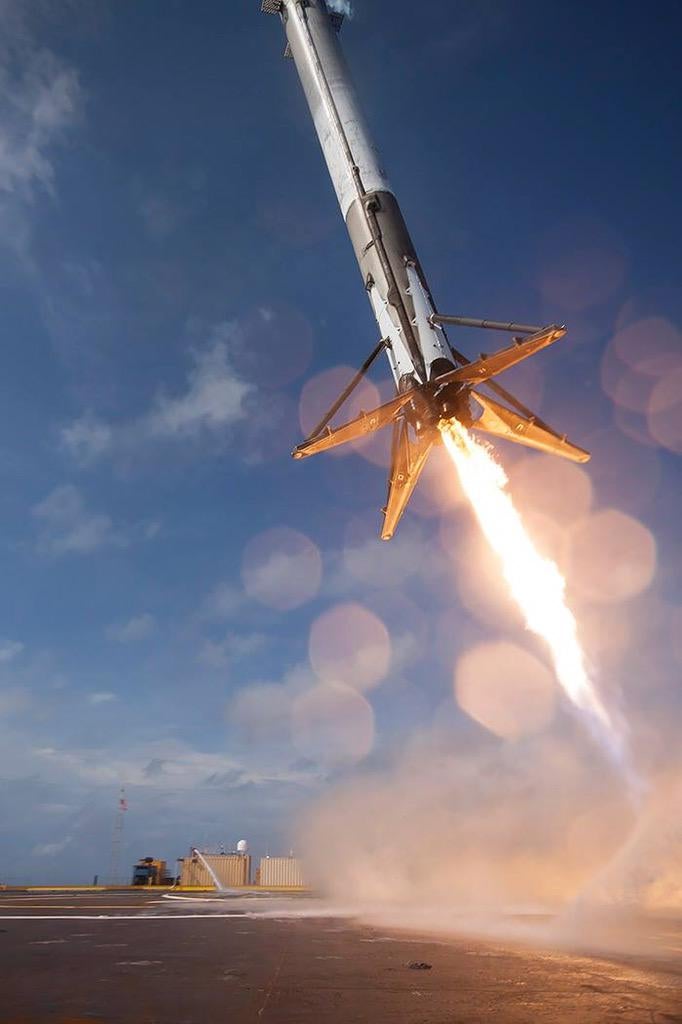Space stuff (NASA, UKSA, CSA, ESA, etc)
- Thread starter strawman
- Start date
More options
Export threadThe Sun will be about 70% covered here in Barcelona, should be pretty nice ...if the sky weren't thick with clouds

I'm particularly bummed because in the floor right above me is the astronomy department, and normally they organize something and the roof and give out special glasses and everything. And in a few months I won't be working here any more >.<
I've said it before & I'll say it again - there is a small area near St Louis which will be in the path of a total solar eclipse TWICE in a 7 year span!!




....oohhh, those are supposed to animate too. I was wondering why both pictures said "no eclipse".The really weird thing is, the first picture of all of those posts animate for me, but the second does not unless I open it in its own window. And that goes for both Chrome at the house, and Firefox here at work.
Yeah, now that I actually pay attention, those animations aren't gifs, so they run thru once, and quickly at that... sorryThe really weird thing is, the first picture of all of those posts animate for me, but the second does not unless I open it in its own window. And that goes for both Chrome at the house, and Firefox here at work.

GasBandit
Staff member
Uh oh. The ISS resupply craft carrying 6000 pounds of supplies seems to be having itself a little Kerbal Space Program moment.
ISS supply craft spinning out of control, docking delayed indefinitely
ISS supply craft spinning out of control, docking delayed indefinitely
GasBandit
Staff member
The sunset on Mars is blue, FYI.

NASA’s Curiosity Mars rover captured the above image on April 15, and it’s being described as the first sunset observed in color by the spacecraft.
The photos were taken last month, but they were just sent back to Earth last week.
While Mars may appear red, the sunset is actually blue, and the Jet Propulsion Laboratory explains why this is possible:


NASA’s Curiosity Mars rover captured the above image on April 15, and it’s being described as the first sunset observed in color by the spacecraft.
The photos were taken last month, but they were just sent back to Earth last week.
While Mars may appear red, the sunset is actually blue, and the Jet Propulsion Laboratory explains why this is possible:
Dust in the Martian atmosphere has fine particles that permit blue light to penetrate the atmosphere more efficiently than longer-wavelength colors. That causes the blue colors in the mixed light coming from the sun to stay closer to sun’s part of the sky, compared to the wider scattering of yellow and red colors. The effect is most pronounced near sunset, when light from the sun passes through a longer path in the atmosphere than it does at mid-day.
[DOUBLEPOST=1431571935,1431571903][/DOUBLEPOST]

Many have been proposed, but all of them come back to that same limitation.I always wondered if there's a theory of faster communication even possible compared to what we have available today.
--Patrick
There are some exotic ideas regarding quantum entanglementI always wondered if there's a theory of faster communication even possible compared to what we have available today.
GasBandit
Staff member
I used to think that too, but wikipedia poured cold water on my giddy hopes.There are some exotic ideas regarding quantum entanglement
Well, that's why I called them exotic as opposed to feasible.I used to think that too, but wikipedia poured cold water on my giddy hopes.
Unfortunately, at least as far as our current understanding of the universe is concerned, there appears to be no possible way for information to travel faster than the speed of light.
If anyone has followed the Planetary Society, they know that they just recently launched their prototype solar sail. After many problems and delays with communicating with it, it has finally deployed its sails. The following is a link of where you can see it for about the next week or two before it gets dragged back down by atmospheric effects.
http://www.n2yo.com/?s=40661
http://www.n2yo.com/?s=40661
I wonder how slow that plane is flying.
GasBandit
Staff member
At that altitude? Probably not very (several hundred mph would be my guess, minimum)I wonder how slow that plane is flying.
At that altitude, yes. At lower altitudes, though, a 747 has a 15:1 glide ratio (without power but at a stable attitude, it will travel 15 feet forward for every foot it descends).Yeah. They have trouble staying up unless they're going pretty fast. Airplanes are heavy, air is thin, etc.
--Patrick
And no idea how much extending the flaps will help, but that's something I expect they wouldn't want to try at 32,000 feet.At that altitude, yes. At lower altitudes, though, a 747 has a 15:1 glide ratio (without power but at a stable attitude, it will travel 15 feet forward for every foot it descends).
--Patrick
Yeah extended the flaps at that altitude might well cause a stall. They generally extended the flaps only at low altitude because of ground effect - an aircraft at low altitude gets a boost to lift from the air being forced against the ground. That's how ground effect vehicles like the Russian Ekranoplanes worked.And no idea how much extending the flaps will help, but that's something I expect they wouldn't want to try at 32,000 feet.
--Patrick
GasBandit
Staff member
Glide ratio doesn't account for speed. It may get 15:1 ratio, but the stall speed of a 747 is still 98 knots (112 mph).
Anyway, I don't think that's a 747 in the video, it looks more like a gulfstream 3 if you made me guess.
Anyway, I don't think that's a 747 in the video, it looks more like a gulfstream 3 if you made me guess.
Last edited:
The ESA's comet lander is communicating again:
For 85 seconds Philae "spoke" with its team on ground, via Rosetta, in the first contact since going into hibernation in November.
(via ESA Rosetta Blog)
(via ESA Rosetta Blog)
Falcon went boom today in the upper atmosphere. :/
http://money.cnn.com/2015/06/28/technology/spacex-rocket/index.html
http://money.cnn.com/2015/06/28/technology/spacex-rocket/index.html
Last edited:
Real Life Kerbal Space Program. Can we hold elections to decide who plays Jebediah?Falcon went boom today in the upper atmosphere. :/


